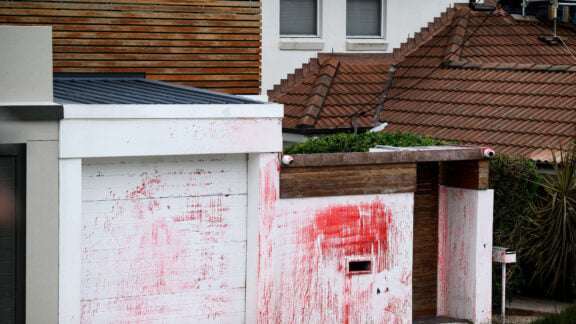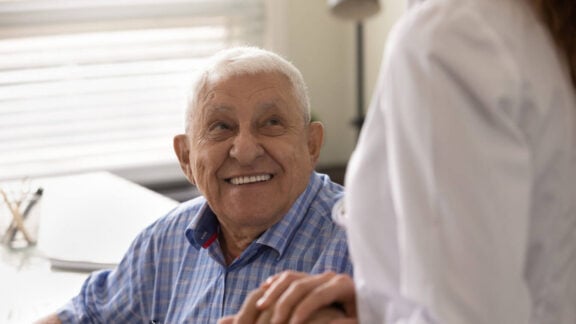As predicted New South Wales has recorded another increase of coronavirus cases, with 21,151 locally acquired infections overnight.
Six people sadly lost their lives in the state which reported another 26 hospitalisations overnight, with 69 people currently in the ICU.
Victoria has also seen an increase in case numbers, hitting 5,919 new cases and seven fatalities. Thirty-two hospitalisations were recorded overnight, with 54 people still in ICU, 21 of whom require ventilation; in total 428 are in hospital.
Meanwhile, a severe heat warning has been in place since yesterday for outdoor COVID-19 testing facilities with temperatures expected to reach 38C today.
Clinics were closed yesterday for health and safety reasons in the heat and with temperatures expected to stay around 28C into the evening.
Sixteen testing sites across South Australia have had to shut down for part of the day today due to severe heat as case numbers continue to rise. A number of metropolitan sites will remain closed between 10.30am and 5.30pm as temperatures stay high. The same rules will apply on Saturday.
Health authorities have warned across the country to stay cautious celebrating New Year’s Eve tonight, and avoid large gatherings or enclosed spaces where social distancing can’t be monitored.
As 2021, comes to an end the government has laid out a new definition of close contacts and isolation requirements following an emergency cabinet meeting yesterday, 30 December 2021, in response to COVID-19 and the Omicron variant. New approaches to test, trace, isolate and quarantine and the vaccine rollout and booster program will be implemented. The National Cabinet will meet again on 5 January 2022.
The Chief Medical Officer Professor Paul Kelly provided an update on the spread of the Omicron variant which continues to show greater infectivity than the Delta variant, but with less severity. Professor Kelly noted that a recent study from South Africa have confirmed a 73 per cent reduction in severity of disease with Omicron compared with Delta.
At the same time, total active cases in Australia have reached over 110,000 cases. However hospitalisation, ICU and ventilation case numbers remain low and within anticipated capacity. There were 1,481 cases in hospital, 122 cases in ICU with 51 of those requiring ventilation. These numbers are remaining relatively constant. The majority of cases in ICU and requiring ventilation continue to be amongst people who are unvaccinated.
Australia’s COVID-19 vaccine rollout continues to expand. To date 42.4 million doses of COVID-19 vaccines have been administered in Australia, including 148,974 in the previous 24 hours.
More than 94 per cent of the Australian population aged 16 years and over have now had a first dose of a COVID-19 vaccine, including over 98 per cent of over 50 year olds and more than 99 per cent of over 70 year olds. More than 91 per cent of Australians aged 16 years and over are now fully vaccinated, including more than 96 per cent of over 50 year olds and more than 99 per cent of Australians over 70 years of age.
Over 2.3 million booster doses have been administered. Australia has sufficient supplies of boosters, with over 20 million mRNA vaccines in stock. Yesterday over 112,000 boosters were administered across Australia. Over 57 per cent of those eligible for boosters have had a booster and almost 25 per cent of Australians aged 70 years of age and over have had a booster in the last 7 weeks since the booster program commenced.
New approach to Test, Trace, Isolate and Quarantine Arrangements (TTIQ) in the context of high levels of COVID-19 community transmission
National Cabinet has agreed to Australian Health Protection Principals Committee (AHPPC) advice to reset TTIQ in the context of high case numbers and the Omicron variant, so that Australians can continue to live with COVID-19.
The revised approach is complementary to the importance of vaccinations including boosters and existing public health and social measures.
Specifically, National Cabinet agreed to revised definitions for who is a close contact, how they are isolated and testing arrangements.
- Close Contacts
National Cabinet agreed that close contacts will be defined as household or household-like contacts of a confirmed case. Close contacts will be defined, except in exceptional circumstances, as those who usually live with or who have stayed in the same household for more than 4 hours as a case during their infectious period.
Testing and Isolation requirements for close contacts and COVID cases
- The isolation period for COVID-19 cases will be standardised regardless of vaccination status to a length of 7 days from the date of their positive test.
Household contacts or household-like contacts, except in exceptional circumstances, must quarantine for 7 days after last exposure to a case regardless of vaccination status and then, subject to a negative Rapid Antigen Test (RAT) on day 6, monitor for symptoms for a further 7 days and repeat testing if symptoms occur. - Other contacts who have been potentially exposed to a case but who are at lower risk of infection must monitor for symptoms and only need to have a RAT or PCR test if symptoms occur.
- All contacts should wear a mask when outside home, monitor symptoms and avoid visiting high risk settings for 14 days following exposure to reduce their risk of transmission to others.
- If RATs are positive, these should be followed by a PCR test to confirm the diagnosis, allow notification and to link individuals into social and medical support. PCR tests are the preferred test for symptomatic individuals.
Close contact arrangements will commence in the Australian Capital Territory, New South Wales, Victoria, Queensland and South Australia from 12.01 am 31 December 2021. South Australia will continue with a 10 day quarantine period for cases and close contacts. Tasmania will commence arrangements from 1 January 2022. Western Australia and the Northern Territory will advise on the start date for new arrangements.
National Cabinet noted that, consistent with their roadmaps, Queensland and Tasmania are transitioning to RAT requirements prior to travel to those states. The Northern Territory will continue with PCR testing for travel at this stage, given current low caseloads. Western Australia will transition out of PCR testing for travel in coming days, and rely on arrival testing and appropriate quarantine under their border controls.
PCR tests will continue to be available at existing state, territory and Commonwealth testing centres, with RATs increasingly being utilised over coming weeks. Such tests will only be provided to those who are close contacts or symptomatic.
National Cabinet will continue to work on arrangements to provide RAT tests to vulnerable cohorts such as remote Indigenous communities as well as in school settings and exceptional circumstances.
International arrivals will be able to undertake a RAT in Australia while in all other cases, RAT tests will be procured by individuals privately at their own cost – they will not be provided by Governments, thereby providing certainty to retailers, wholesalers and suppliers.
The Commonwealth, states and territories will work on concessional arrangements for low income and concession card holders for self-administered RATs.
In certain critical occupations where an exposure occurs, arrangements for management of contacts can be further modified to allow business continuity, subject to a thorough risk assessment process. Further work is underway on arrangements for health and aged care settings, with AHPPC to provide further advice for next week’s National Cabinet meeting.









